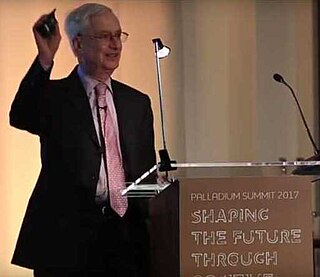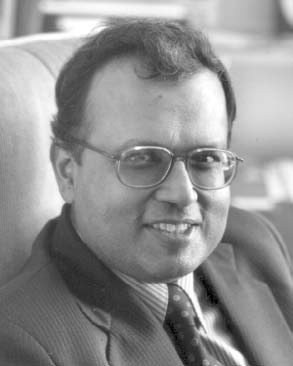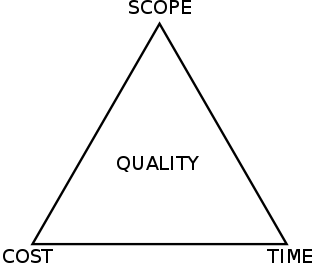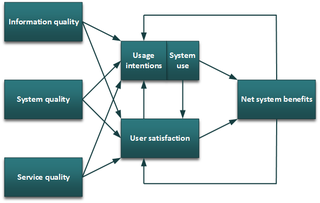Related Research Articles

Lean manufacturing is a method of manufacturing goods aimed primarily at reducing times within the production system as well as response times from suppliers and customers. It is closely related to another concept called just-in-time manufacturing. Just-in-time manufacturing tries to match production to demand by only supplying goods that have been ordered and focus on efficiency, productivity, and reduction of "wastes" for the producer and supplier of goods. Lean manufacturing adopts the just-in-time approach and additionally focuses on reducing cycle, flow, and throughput times by further eliminating activities that do not add any value for the customer. Lean manufacturing also involves people who work outside of the manufacturing process, such as in marketing and customer service.
An information system (IS) is a formal, sociotechnical, organizational system designed to collect, process, store, and distribute information. From a sociotechnical perspective, information systems comprise four components: task, people, structure, and technology. Information systems can be defined as an integration of components for collection, storage and processing of data, comprising digital products that process data to facilitate decision making and the data being used to provide information and contribute to knowledge.

August-Wilhelm Scheer is a German Professor of business administration and business information at Saarland University, and founder and director of IDS Scheer AG, a major IT service and software company. He is known for the development of the Architecture of Integrated Information Systems (ARIS) concept.

Operations management is concerned with designing and controlling the production of goods and services, ensuring that businesses are efficient in using resources to meet customer requirements.
Computer user satisfaction is the attitude of a user to the computer system they employ in the context of their work environments. Doll and Torkzadeh's (1988) definition of user satisfaction is, the opinion of the user about a specific computer application, which they use. In a broader sense, the definition of user satisfaction can be extended to user satisfaction with any computer-based electronic appliance. However, scholars distinguish between user satisfaction and usability as part of Human-Computer Interaction. Successful organisations have systems in place which they believe help maximise profits and minimise overheads. It is therefore desirable that all their systems succeed and remain successful; and this includes their computer-based systems. According to key scholars such as DeLone and McLean (2002), user satisfaction is a key measure of computer system success, if not synonymous with it. However, the development of techniques for defining and measuring user satisfaction have been ad hoc and open to question. The term Computer User Satisfaction is abbreviated to user satisfaction in this article.
The following outline is provided as an overview of and topical guide to business management:

Robert Samuel Kaplan is an American accounting academic, and Emeritus Professor of Leadership Development at the Harvard Business School. He is known as co-creator of Balanced Scorecard. together with David P. Norton.

Amar Gupta is an Indian computer scientist based in the United States. Gupta has worked in academics, private companies, and international organizations in positions that involved analysis and leveraging of opportunities at the intersection of technology and business, as well as the design, development, and implementation of prototype systems that led to widespread adoption of new techniques and technologies.
Computer-aided lean management, in business management, is a methodology of developing and using software-controlled, lean systems integration. Its goal is to drive innovation towards cost and cycle-time savings. It attempts to create an efficient use of capital and resources through the development and use of one integrated system model to run a business's planning, engineering, design, maintenance, and operations.

The project management triangle is a model of the constraints of project management. While its origins are unclear, it has been used since at least the 1950s. It contends that:
- The quality of work is constrained by the project's budget, deadlines and scope (features).
- The project manager can trade between constraints.
- Changes in one constraint necessitate changes in others to compensate or quality will suffer.
Lynn Gref is an American technologist and systems engineer, who has done pioneering work in missile systems; command, control and communications (C3) systems; and satellite systems. He and Dr. William Spuck developed the Rapid Development Methodology (RDM) that was employed in the development of a number of C3 systems for the U.S. Department of Defense. RDM is a form of software development classified as iterative and incremental development. A primary distinction of RDM is that the user is left with a usable capability at the end of every iteration. He pioneered the development of C3 systems using the Ada programming language. He has coauthored a number of reports as a member the Army Science Board (ASB) and as a committee member for the Naval Studies Board of the United States National Academy of Sciences.

The information systems success model is an information systems (IS) theory which seeks to provide a comprehensive understanding of IS success by identifying, describing, and explaining the relationships among six of the most critical dimensions of success along which information systems are commonly evaluated. Initial development of the theory was undertaken by William H. DeLone and Ephraim R. McLean in 1992, and was further refined by the original authors a decade later in response to feedback received from other scholars working in the area. The IS success model has been cited in thousands of scientific papers, and is considered to be one of the most influential theories in contemporary information systems research.
William J. (Bill) Kettinger an American computer scientist and is the William S. Lee Distinguished Professor in Management Information Systems at Clemson University, known for his work in the field of business process modelling and business process reengineering.
René Wijnand Wagenaar was a Dutch academic, and Professor of Information and Communication Technology at the Faculty of Technology, Policy and Management of the Delft University of Technology, known for his work on Modular Network Design and shared service centers.

David P. Norton (1941–2023) was an American business theorist, business executive and management consultant, known as co-creator, together with Robert S. Kaplan, of the Balanced Scorecard. David P. Norton co-founded Palladium Group, Inc. and served as its chief executive officer.
Ephraim R. McLean is an American organizational theorist, and Regents' Professor (Emeritus) of Information Systems and holder of the G.E. Smith (GRA) Eminent Scholars' Chair at the J. Mack Robinson College of Business. Known as one of the founders of the MIS discipline in the 1960s, his work with William H. DeLone on the information systems success model is world-renowned.
William H. Gruber is an American organizational theorist, former professor at MIT, Boston College and Northeastern University, consultant and author, known for his work in the field of computer technology in business in the 1980s.
Warren Bradford "Brad" Rigdon is an American former business executive at McDonnell Douglas, also known for developing the NIST Enterprise Architecture Model.
Willem Adriaan Gerrit Anton ("Harry") Bouwman is a Dutch Information systems researcher, and professor at the Åbo Akademi University, Institute for Advanced Management Systems Research, known for his work on mobile services, business models and business architecture.
George M. Marakas is an American author, scholar, research scientist, professor, consultant, entrepreneur, and an authority in specific areas within the field of information systems. He has been named a Distinguished Member - Cum Laude by the Association for Information Systems. His academic career, includes faculty appointments at the Robert H. Smith School of Business at University of Maryland where he was a Center for Teaching Excellence Eli Lilly Fellow, the Kelley School of Business at Indiana University where he held the British-American Tobacco Fellowship for Global Information Systems Strategy., the University of Kansas School of Business, and the Florida International University College of Business where he holds the rank of Full professor and is the Associate Dean for Research and Doctoral Studies for the FIU College of Business.
References
- ↑ Taylor, Shirley, and Peter A. Todd. "Understanding information technology usage: A test of competing models." Information systems research 6.2 (1995): 144-176.
- ↑ Alavi, Maryam, and Dorothy E. Leidner. "Review: Knowledge management and knowledge management systems: Conceptual foundations and research issues." MIS Quarterly (2001): 107-136.
- ↑ Profile William DeLone, American University. Accessed 10.02.2015.